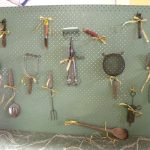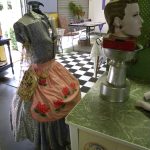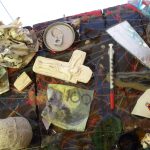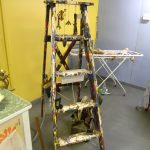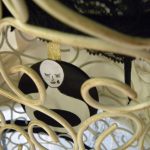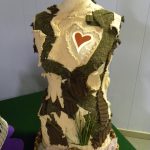This arts based inquiry was driven by an urge to create altars on which to explore my experiences of a woman’s roles as daughter, partner and mother. My focus was on the experiential nature of learning to love close others and cope with the burden of staying with my own experience of distress when loved ones were struggling with life threatening illnesses and conditions. I was interested to experience what might happen in the process of making these altars and to follow the emergence of how this might happen. I offer this dissertation as a resource to those in the fields of arts based research, therapeutic arts based practice, emergent research design, mental health, attachment issues, and trauma recovery for carers.
The emergent nature of the methodologies used were driven by the fact that this is a single subject subjective inquiry using arts based methods and processes. I had the freedom and the challenge of using procedures which matched the individual processes needed to both create each individual altar, and to present my findings from texts within the story of the inquiry. In line with Heron and Reason’s (2008) four ways of knowing this inquiry is experiential and presentational in the arts making phase, presentational and conceptual in the writing phase, and aims to add to practical knowing. In this inquiry I relied on collaborative dialogues with others. This was multifunctional. These dialogues gave credibility and rigor to the work, and also helped co-construct meanings about the subject matter and the processes used in arts based practice. The ethical dilemma of privacy for others when creating images and writing words about my relationships with them, the topic of my inquiry, required great care.
The inquiry findings included knowing that came from the content in the process via dialogues with objects and materials, embodied self-awareness and in the experience of movement when making 3D Altars. These enabled expression of emotion in a created safe environment and enabled the making of personal meanings through collaboration with others. These processes accessed clarity to my relational patterns with close others, revealing an ongoing and fluid cycle of secure and insecure attachment with them dependent on environmental factors. The arts enabled the transformation of my anxieties into an acknowledgement of my capacities to recognise triggers in the environment that arouse insecurity. New perceptions were found around my capacity to face challenging situations, relief to understand that complex grief results in states of exhaustion, accepting my own ambivalences, and being more secure with my own opinions and decisions gives testimony to how the arts provide a way to make sense of things and to transform and heal.

